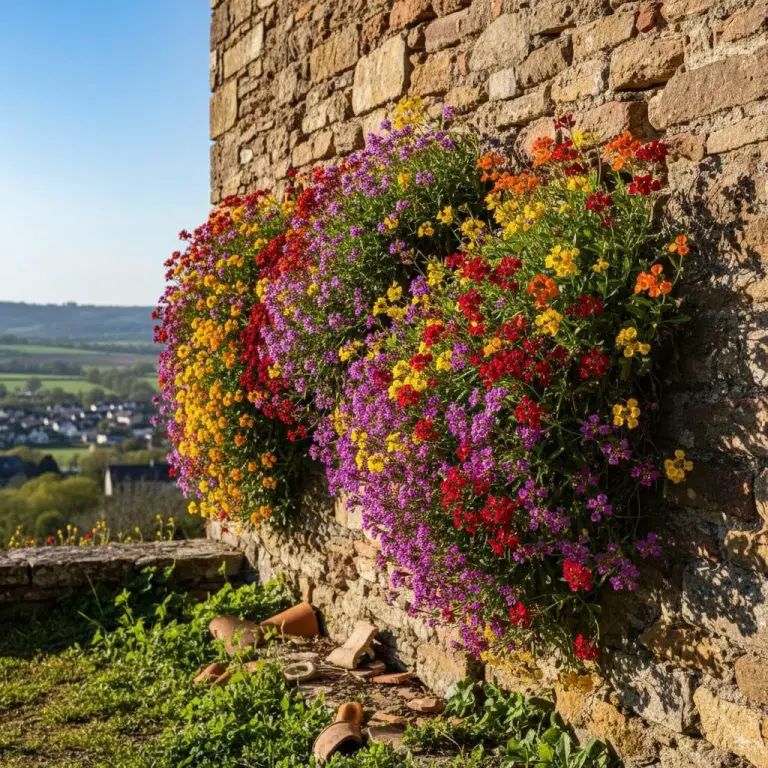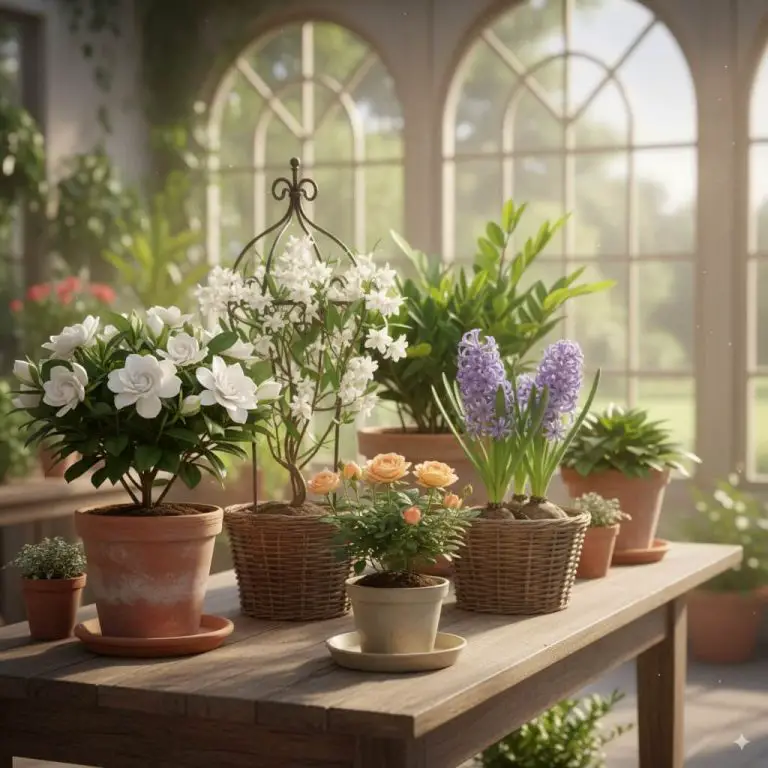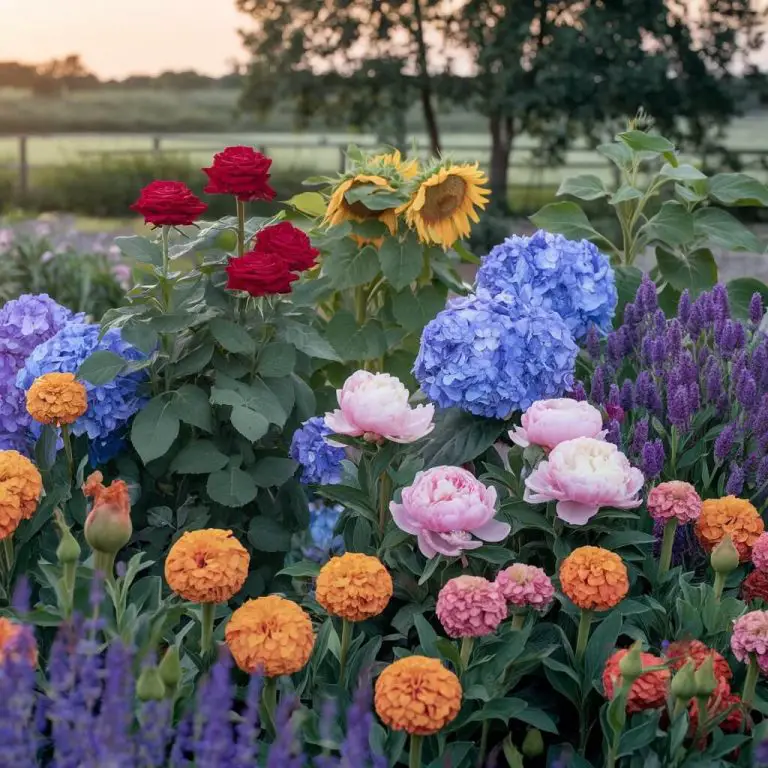Why Are Flowering Plants Important: Your Guide To A Thriving Garden
There’s nothing quite like stepping into a garden bursting with the vibrant colors and sweet scents of blooming flowers. It’s a feast for the senses, a source of pride, and for many of us, it’s the very heart of why we love to garden. It’s easy to see them as just pretty faces, adding a splash of color to our green spaces.
But what if I told you that every single one of those blossoms is doing some serious heavy lifting for your garden, your local ecosystem, and even your own well-being? Understanding why are flowering plants important goes far beyond simple aesthetics. It unlocks a deeper appreciation and a more effective way to garden.
I promise that by the end of this guide, you’ll see your flowering plants not just as decorations, but as essential, hardworking partners in creating a healthier, more beautiful, and more productive garden. We’ll dive into their crucial ecological roles, the surprising benefits they bring to your vegetable patch, and how to choose and care for them using sustainable, eco-friendly practices.
So, grab your gardening gloves and a cup of tea, and let’s explore the incredible, multifaceted world of flowering plants together.
What's On the Page
- 1 The Ecological Superheroes in Your Backyard: Why Are Flowering Plants Important for Nature?
- 2 Beyond Beauty: The Surprising Benefits for Your Vegetable Garden
- 3 Your Personal Oasis: How Flowering Plants Boost Your Well-being
- 4 A Practical Why Are Flowering Plants Important Guide: Choosing the Right Plants
- 5 Common Problems and Your Flowering Plant Care Guide
- 6 Frequently Asked Questions About Why Flowering Plants Are Important
- 7 Your Garden, Your Impact
The Ecological Superheroes in Your Backyard: Why Are Flowering Plants Important for Nature?
Long before we started planting them for their beauty, flowering plants, or angiosperms, were busy building the world as we know it. They are the cornerstone of most terrestrial ecosystems, and your garden is a small but mighty part of that intricate web. This is where the true benefits of why are flowering plants important begin.

🌿 The Companion Planting & Gardening Book (eBook)
Bigger harvests, fewer pests — natural pairings & simple layouts. $2.40
Get – $2.40
🪴 The Pest-Free Indoor Garden (eBook)
DIY sprays & soil tips for bug-free houseplants. $1.99
Get – $1.99Creating a Pollinator Buffet
Think of your garden as a five-star restaurant for bees, butterflies, hummingbirds, and other essential pollinators. These creatures don’t just visit for a free meal; they are performing a vital service. As they move from flower to flower collecting nectar and pollen, they facilitate pollination.
This process is responsible for the reproduction of over 85% of the world’s flowering plants, including more than two-thirds of the world’s crop species. Without pollinators, we wouldn’t have apples, almonds, blueberries, or even coffee! By planting a diverse range of flowers, you provide a consistent food source from early spring to late fall, creating a reliable haven for these crucial creatures.
- Early Spring Blooms: Crocuses and lungwort provide a lifeline for bees emerging from hibernation.
- Summer Powerhouses: Coneflowers, bee balm, and lavender are abuzz with activity all summer long.
- Late Season Snacks: Asters and goldenrod ensure pollinators are well-fed before winter.
Supporting the Entire Food Web
The importance of flowering plants extends far beyond pollinators. They are the foundation of the food web. Their leaves are eaten by caterpillars, which in turn become food for birds. Their seeds are a vital food source for birds and small mammals, especially during the lean winter months.
Even after they die back, they continue to give. Decomposing plant matter enriches the soil, feeding the microorganisms that keep your garden soil healthy and alive. A garden rich in native flowering plants is a garden teeming with life, from the smallest insect to the most beautiful songbird. It’s a perfect example of eco-friendly why are flowering plants important in action.
Beyond Beauty: The Surprising Benefits for Your Vegetable Garden
If you think flowers and vegetables should live in separate beds, it’s time to rethink your garden layout! Integrating flowering plants among your edibles is one of the oldest and most effective gardening tricks in the book. This practice, often called companion planting, is a cornerstone of organic gardening.
The Magic of Companion Planting
Many flowering plants are fantastic companions for vegetables. They can attract beneficial insects that prey on common garden pests, improve soil health, and even enhance the growth and flavor of your crops. It’s a beautiful, symbiotic relationship.
For example, planting marigolds around your tomatoes is a classic strategy. The marigolds release a substance from their roots that can deter nematodes, tiny soil pests that can damage tomato roots. It’s a perfect illustration of how to leverage the fact that flowering plants are important.
Natural Pest Control Allies
Some of the best pest-control agents in your garden have wings! Ladybugs, lacewings, and hoverflies are voracious predators of pests like aphids, mites, and thrips. The problem? These beneficial insects need food, too.
Flowering plants with small, shallow blossoms like alyssum, dill, and cilantro provide the perfect nectar and pollen source for these good guys. By planting these flowers, you’re essentially rolling out the welcome mat for your own personal pest-control army. This is one of the key why are flowering plants important best practices for any organic gardener.
Your Personal Oasis: How Flowering Plants Boost Your Well-being
The importance of flowering plants isn’t just about the external environment; it’s also about our internal one. The simple act of planting, tending, and enjoying flowers has profound and scientifically-backed benefits for our mental and physical health.
Stress Reduction and Mental Clarity
Have you ever felt your shoulders relax after spending just a few minutes in a beautiful garden? That’s not your imagination. Studies have shown that interacting with plants can lower cortisol levels (the stress hormone), reduce blood pressure, and improve mood.
The focus required for gardening tasks—from planting a tiny seed to deadheading a spent bloom—can be a form of mindfulness, pulling you away from daily worries and grounding you in the present moment. Your flower garden can be a powerful sanctuary for mental peace.
A Feast for the Senses
A garden filled with flowers engages all of our senses in a way few other things can. The visual delight of a sea of colorful petals, the sweet fragrance of a rose or lily, the soft texture of a lamb’s ear leaf, and the gentle sound of bees buzzing from bloom to bloom—it’s a deeply restorative experience.
This sensory engagement helps us connect with the natural world, fostering a sense of wonder and appreciation that is essential for a balanced life.
A Practical Why Are Flowering Plants Important Guide: Choosing the Right Plants
Feeling inspired to get planting? Fantastic! The key to success is choosing the right plants for your specific environment. Don’t worry—it’s easier than it sounds. Here’s how to figure out how to why are flowering plants important in your own space.
Know Your Zone and Sun Exposure
Before you buy a single plant, you need to know two things: your USDA Plant Hardiness Zone and the amount of sun your garden gets. The hardiness zone tells you which plants can survive the winter in your area. Sun exposure (full sun, part shade, or full shade) will determine which plants will thrive.
Most plant tags will have this information clearly listed. A little homework upfront will save you a lot of heartache and money later!
Native Plants: The Ultimate Eco-Friendly Choice
If you want to maximize the ecological benefits of your garden, prioritize native plants. These are plants that have evolved in your local region for thousands of years. They are perfectly adapted to your climate and soil and have co-evolved with local wildlife.
This means they generally require less water, no fertilizer, and are more resistant to local pests and diseases. Most importantly, they provide the exact type of food and shelter that local pollinators and birds need to survive. This is the heart of sustainable why are flowering plants important.
Easy-to-Grow Flowers for Beginners
Just starting out? No problem! There are plenty of gorgeous, low-maintenance flowers that will make you look like a pro. Don’t worry—these flowers are perfect for beginners!
- Sunflowers: Big, cheerful, and incredibly easy to grow from seed. Kids love them!
- Zinnias: These come in a rainbow of colors, bloom all summer, and are butterfly magnets.
- Cosmos: Delicate, airy flowers that seem to dance in the breeze. They tolerate poor soil and some neglect.
- Marigolds: Tough as nails, great for pest control, and provide vibrant color until the first frost.
Common Problems and Your Flowering Plant Care Guide
Even the most experienced gardeners run into issues. Understanding the common problems with why are flowering plants important to grow can help you troubleshoot quickly. Here are a few common challenges and how to solve them, making this your go-to why are flowering plants important care guide.
“Why Aren’t My Flowers Blooming?”
This is one of the most common frustrations. The answer usually lies in one of three areas:
- Not Enough Sun: Most flowering plants need at least 6 hours of direct sunlight to produce abundant blooms. If your plant looks healthy but isn’t flowering, lack of light is the most likely culprit.
- Too Much Nitrogen: If you’re using a fertilizer high in nitrogen, you’ll get lush, green leaves but very few flowers. Switch to a balanced fertilizer or one that’s higher in phosphorus (the middle number, like 5-10-5) to encourage blooms.
- Improper Pruning: Some plants, like lilacs, bloom on “old wood” (last year’s growth). If you prune them in the spring, you’re cutting off all the flower buds! Always research the specific pruning needs of your plants.
Dealing with Pests and Diseases Naturally
The best defense is a good offense. Healthy, strong plants are much less susceptible to pests and diseases. Ensure your plants have good air circulation, the right amount of water (don’t overwater!), and healthy soil.
If pests do appear, resist the urge to reach for a chemical spray, which can harm beneficial insects. Often, a strong blast of water from the hose is enough to dislodge aphids. For more persistent issues, insecticidal soap or neem oil are great organic options that are much safer for the ecosystem. This approach is central to eco-friendly why are flowering plants important practices.
Frequently Asked Questions About Why Flowering Plants Are Important
Do all flowers attract the same pollinators?
No, not at all! Different flower shapes, colors, and scents attract different pollinators. For example, bees are drawn to blue, purple, and yellow flowers. Hummingbirds love red, tubular-shaped flowers like bee balm and salvia. Butterflies prefer flat-topped flowers like zinnias and coneflowers that provide a landing pad. Planting a variety of flower types is the best way to support a diverse range of pollinators.
Can I grow flowering plants if I only have a small balcony?
Absolutely! Many flowering plants do wonderfully in containers. Geraniums, petunias, verbena, and calibrachoa are all fantastic choices for sunny balconies. For shadier spots, try impatiens or fuchsias. You can create a mini-pollinator paradise right outside your door!
What’s the single most important tip for a beginner growing flowers?
Start with the soil! Healthy soil is the foundation of a healthy garden. Before planting, amend your soil with a few inches of compost. Compost improves soil structure, adds vital nutrients, and helps retain moisture. It’s the best investment you can make for beautiful, thriving flowers. This is one of the most crucial why are flowering plants important tips we can offer.
Your Garden, Your Impact
As we’ve seen, the answer to “why are flowering plants important?” is so much bigger and more exciting than just “because they’re pretty.” They are the tireless engines of our ecosystems, the guardians of our food supply, and a source of profound joy and well-being.
Every flower you plant is a small act of restoration. It’s a meal for a bee, a home for a beneficial insect, and a moment of peace for you. It’s a vote for a healthier, more beautiful, and more vibrant world.
So, the next time you’re tending to your garden, take a moment to appreciate the incredible work your flowering plants are doing. You’re not just a gardener; you’re a steward of a tiny, powerful ecosystem. Now go forth and grow something beautiful!
- Black Dust Mold – Your Complete Guide To Identification, Treatment, - December 12, 2025
- What Gets Rid Of Mould – Your Ultimate Guide To A Healthy, Fungus-Free - December 12, 2025
- Black Mold On Dirt – Your Expert Guide To Identification, Treatment, - December 12, 2025



